September Inflation Rate Registers at 3.7 percent
The inflation in Northern Mindanao decelerated to 3.7 percent in September 2021, from 3.9 percent in August 2021. This brings the region’s average inflation from January to September 2021 to 3.9 percent. (Table 1 and Figure 1)
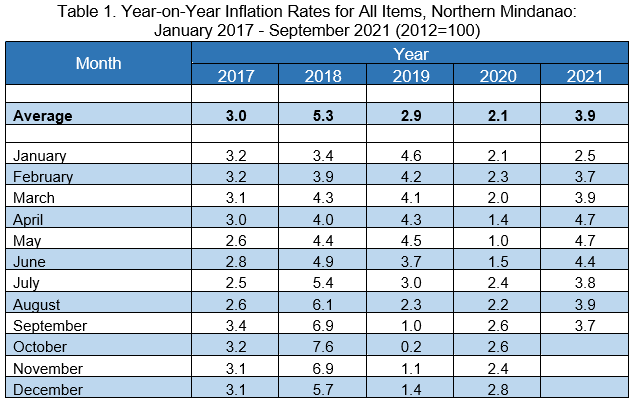
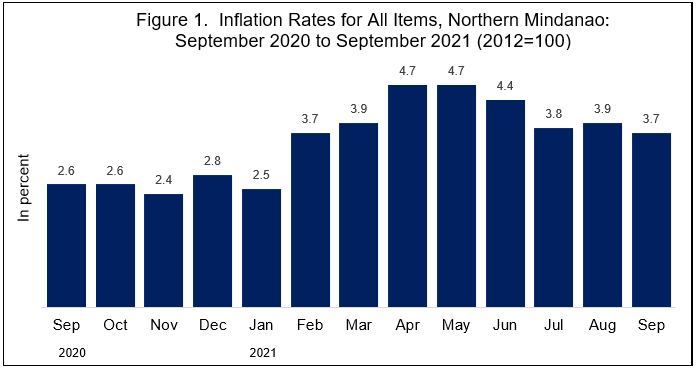
The year-on-year regional inflation accelerated by 1.1 percentage points, from 2.6 percent in September 2020. This implies that the prices of goods and services in September this year increased at a faster pace than the recorded rate of increase in the same month last year. (Table 2)
Among the provinces, Camiguin and Lanao del Norte posted inflation rates higher than the regional average, with inflation rates of 4.6 percent and 4.7 percent, respectively. Meanwhile, the province of Misamis Occidental posted the lowest inflation rate of 2.9 percent. It was the only province that recorded a deceleration in inflation rate.
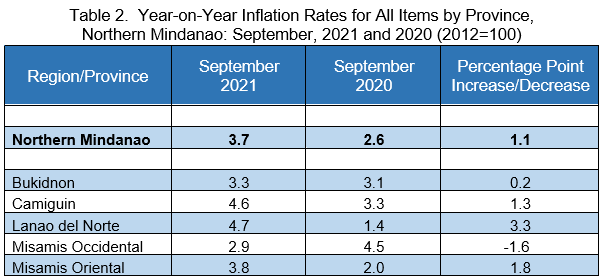
Consumer Price Index
The Consumer Price Index (CPI) is an indicator of the changes in the average retail prices of a fixed basket of goods and services commonly purchased by households relative to the base year.
Northern Mindanao’s CPI for the month of September 2021 was posted at 133.4 which implies that the price of a basket of goods and services in September 2021 was 33.4 percent higher than its price in 2012. (Figure 2)
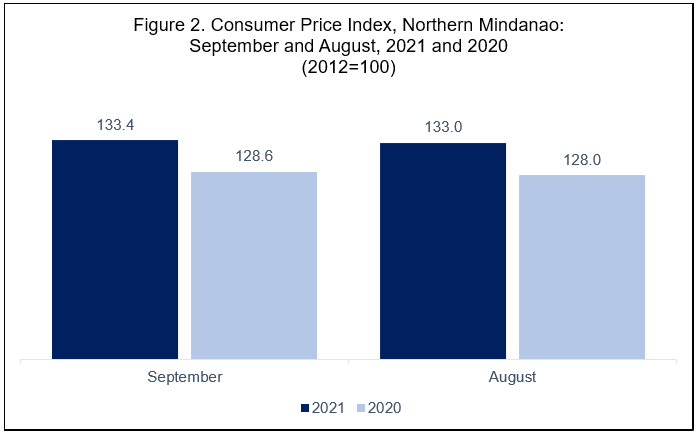
Among the provinces in the region, the highest CPI was recorded in Misamis Occidental at 136.7, followed by Misamis Oriental at 133.2, Bukidnon at 132.4, Lanao del Norte at 132.3, and Camiguin at 131.6. (Figure 3)

Figure 4 illustrates the CPI for all commodity groups in the region. In September 2021, Alcoholic Beverages and Tobacco registered the highest CPI at 262.2 while Communication registered the lowest CPI at 106.7.
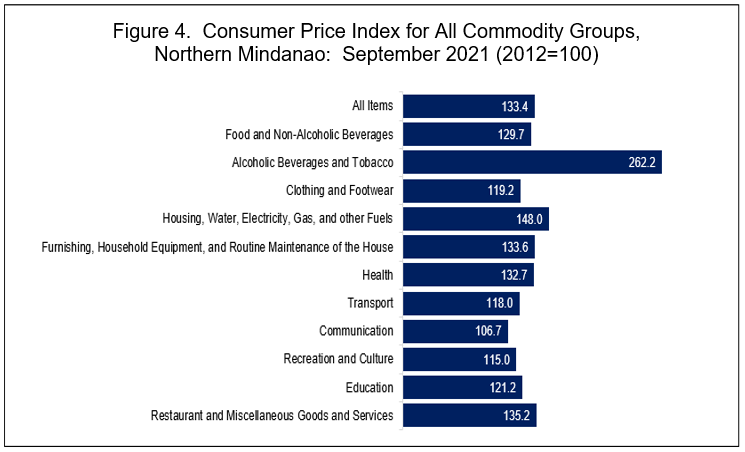
Purchasing Power of Peso (PPP)
The Purchasing Power of Peso (PPP) shows the real value of the peso relative to the base period. The PPP in Northern Mindanao dropped to PhP 0.75 in September 2021 from PhP 0.78 in September 2020. This means that a consumer’s PhP 100 in 2012 can only purchase PhP 75 worth of goods and services in September 2021. (Table 3)
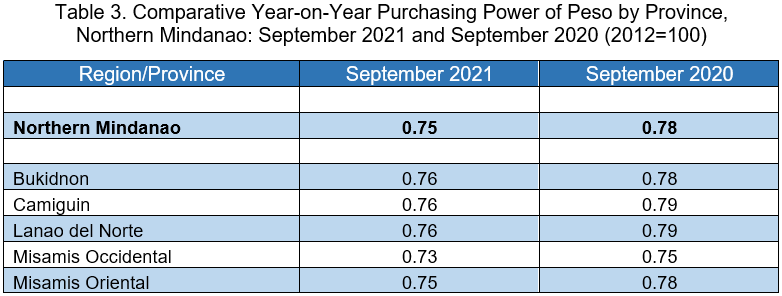
All provinces showed a lower PPP in September 2021 compared to September 2020. Misamis Occidental had the lowest PPP for September 2021 at PhP 0.73.
TECHNICAL NOTES
Consumer Price Index (CPI) – The CPI is an indicator of the changes in the average retail prices of a fixed basket of goods and services commonly purchased by households relative to a base year.
Used of CPI – CPI is most widely used in the calculation of the inflation rate and purchasing power of peso. It is a major statistical series used for economic analysis and as a monitoring indicator of government economic policy.
Computation of CPI – The computation of the CPI involves consideration of the following important points:
a. Base Period – The reference data or base period is the benchmark or reference date or period at which the index is taken as equal to100.
b. Market Basket – A sample of the thousands of varieties of goods purchased for consumption and services availed by the households in the country selected to represent the composite price behavior of all goods and services purchased by consumers.
c. Weighing System – The weighing pattern uses the expenditures on various consumer items purchased by households as a proportion to total expenditure.
d. Formula – The formula used in computing the CPI is the weighted arithmetic mean of price relatives, the Laspeyre’s formula with a fixed base year period (2012) weights.
e. Geographic Coverage – CPI values are computed at the national, regional, and provincial levels, and for selected cities.
Inflation Rate (IR) – is the rate of change of the CPI expressed in percent. Inflation is interpreted in terms of declining purchasing power of peso.
Purchasing Power of Peso (PPP) – shows how much the peso in the base period is worth in the current period. It is computed as the reciprocal of the CPI for the period under review multiplied by 100.

